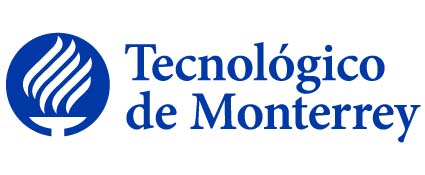
|
|||||
Disciplina asociada:Ingeniería Mecánica |
|||||
Escuela:
Ingeniería y Ciencias
|
|||||
Departamento Académico:
Mecánica y Materiales Avanzados
|
|||||
Programas académicos: |
|||||
Requisitos:(Estar Cursando M 00004 o Haber Cursado M 00004) |
|||||
Equivalencia:M 95891 ; M3013 |
|||||
Intención del curso en el contexto general del plan de estudios: |
|||||
Objetivo general de la Unidad de Formación: |
|||||
| Introducción. El método directo. Problemas con valores en la frontera. Métodos que utilizan funciones de prueba. Procedimiento general para aplicar los métodos que utilizan funciones de prueba. El concepto de elemento. Elementos lineales para problemas unidimensionales. Elementos de orden superior para problemas unidimensionales. Comparación del desempeño de los diferentes tipos de elementos. Problemas en dos dimensiones. Tópicos relacionados con la modelación de problemas. | |||||
Técnica didáctica sugerida: |
|||||
| No especificado | |||||
Bibliografía sugerida: |
|||||
|
LIBROS DE TEXTO: * Logan, Daryl L., A first course in the finite element method using Algor, 2nd ed., Australia ; Pacific Grove, CA : Brooks/Cole Pub. Co., 2001, * David S. Burnett, Finite Èlement Analysis: From Concepts to Applications, Addison-Wesley, 1987, Inglés, * Addison-Wesley, Finite Èlement Analysis: From Concepts to Applications., 1987, inglés, * Hutton, David V., Fundamentals of finite element analysis, International ed., Boston : McGraw-Hill, c2004, 0072395362 (acid-free paper)0071122311 (ISE) * Chandrupatla, Tirupathi R., Introducción al estudio del elemento finito en ingeniería, México : Prentice Hall Hispanoamericana, 1999, Español, |
|||||
Perfil del Profesor: |
|||||
|
(141901)Maestría en Ingeniería Mecánica ; (141901)Doctorado en Ingeniería Mecánica CIP: 141901 |
|||||
|
|||||
Discipline:Mechanical Engineering |
|||||
School:
Engineering and Sciences
|
|||||
Academic Department:
Mechanics and Advanced Materials
|
|||||
Programs: |
|||||
Prerequisites:( M 00004 Corequisite or M 00004) |
|||||
Equivalences:M 95891 ; M3013 |
|||||
Course intention within the general study plan context: |
|||||
Course objective: |
|||||
| Introduction. Direct method. Boundary value problems. Methods that use test functions. General procedure for applying the methods that use test functions. The concept of the element. Linear elements for one-dimensional problems. Higher-order elements for one-dimensional problems. Comparison of the performance of the different types of elements. Problems in two dimensions. Topics related to problem modeling. | |||||
Teaching and learning tecniques: |
|||||
| Not Specified | |||||
Suggested Bibliography: |
|||||
|
TEXT BOOKS: * Logan, Daryl L., A first course in the finite element method using Algor, 2nd ed., Australia ; Pacific Grove, CA : Brooks/Cole Pub. Co., 2001, * David S. Burnett, Finite Èlement Analysis: From Concepts to Applications, Addison-Wesley, 1987, Inglés, * Addison-Wesley, Finite Èlement Analysis: From Concepts to Applications., 1987, inglés, * Hutton, David V., Fundamentals of finite element analysis, International ed., Boston : McGraw-Hill, c2004, 0072395362 (acid-free paper)0071122311 (ISE) * Chandrupatla, Tirupathi R., Introducción al estudio del elemento finito en ingeniería, México : Prentice Hall Hispanoamericana, 1999, Español, |
|||||
Academic credentials required to teach the course: |
|||||
|
(141901)Master Degree in Mechanical Engineering and (141901)Doctoral Degree in Mechanical Engineering CIP: 141901 |
|||||